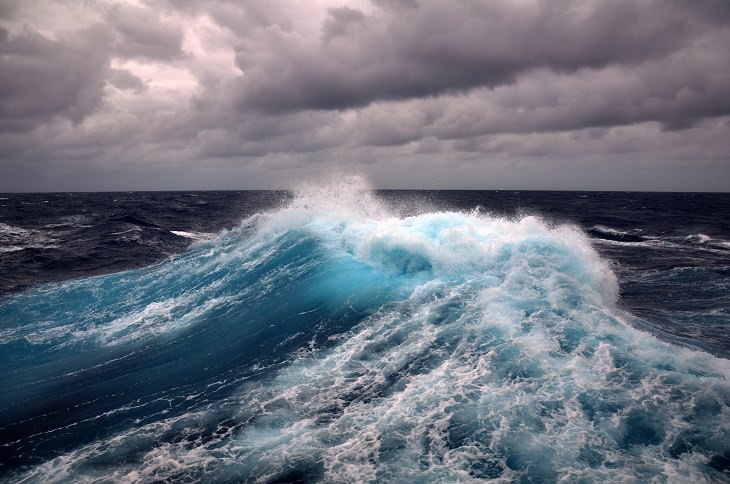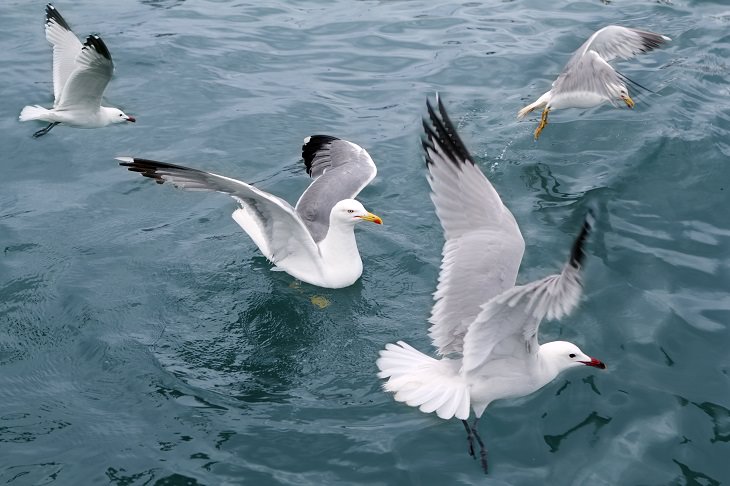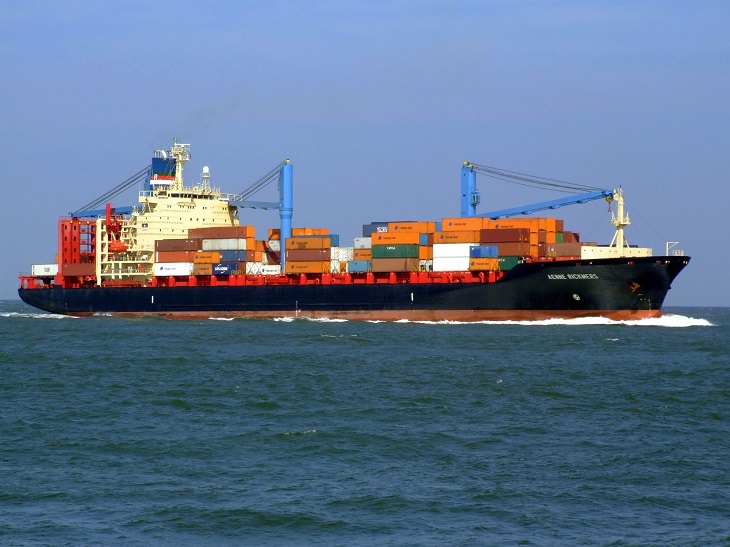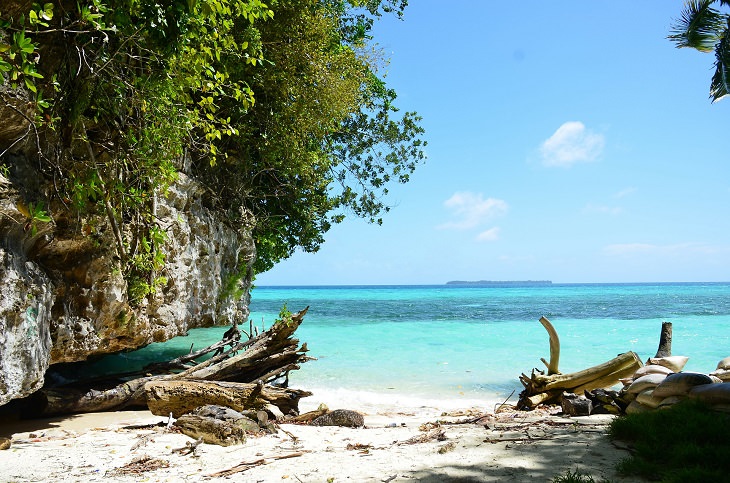
Salvador Alvarenga loved his fiberglass boat – no cabin, no roof, just a 25-foot long canoe-shaped boat that was designed to carve through the waves like a huge surfboard with an engine mounted on the back.
Alvarenga was a 37-year-old Salvadoran fisherman living and working in Mexico. A heavy drinker who was always quick to pick up the tab, he had no family tying him down – his 13-year-old daughter lived with her mother in El Salvador.

On November 18th, 2012, Alvarenga planned to head out into the Pacific at 10 a.m. and work until 4 p.m. the following day. He was accompanied by Ezequiel Cordoba, a 22-year-old rookie. The boat was filled with over a thousand pounds of equipment, including a five-foot-long and four-foot-high icebox that they hoped would soon be full of tuna, mahimahi, and shark.
They had been warned that a storm was brewing, but there was nothing that would keep them from setting off – in one day, they’d make enough money to survive a full week.
As they blasted through the waves, some 75 miles from land, Alvarenga let out his two-mile-long fishing line. The storm was gaining strength on land but had not yet reached the men far offshore. All this changed around 1 a.m. Waves started to rock the small boat, which began to tilt alarmingly. They realized that they desperately needed to start making their way back towards shore.
However, with the winds and waves kicking up, the boat began to fill with water. Alvarenga had Cordoba bail, while he retrieved his fishing line, but the waves were filling their boat much faster than they could empty it, forcing Alvarenga to make a radical decision. He cut the line, dumping thousands of dollars’ worth of equipment and fish into the sea. He then pointed the boat towards his home port of Chocohuital, six hours away. Then he called his boss, Willie, to report the situation.
With dawn on the horizon, the men spotted the rise of the mountains on the horizon. They were figuring out a route through the vicious shoreline surf when the motor coughed. “I couldn’t believe it,” says Alvarenga. “We were 15 miles off the coast, and the motor died.”
He yanked the cord on the motor to try to get the motor running, but then the cord snapped. High waves raised and dropped the boat, sending the men crashing into the sides. “Willie, Willie!” Alvarenga shouted into the radio. “If you’re coming to get me, come now!”
“We’re coming!” Willie shouted back. Shortly after that, the radio died. The wind continued to rip straight offshore, driving the men farther out to sea.

It was five days before the winds eased. The two men were now roughly 280 miles offshore. Their only likely rescue was if they were spotted by another boat. However, the boat was difficult to see as it sat so low in the water. From any more than half a mile away, they were virtually invisible.
The sun during the day made it feel like they were being cooked alive. During the cold nights, they’d climb inside the ice box and huddle together for warmth. Thirst had become an obsession, as had hunger. “I was so hungry that I was eating my own fingernails,” says Alvarenga.
When rain finally arrived four days later, the men took off their clothes and showered in a glorious deluge of freshwater, laughing and lapping it up. By the time it stopped, they have collected five gallons of freshwater in plastic bottles that they had found floating in the ocean. This would last them a week if they rationed it properly.
Roughly 11 days after losing the engine and eating just small, bony triggerfish that were caught by hand, Alvarenga heard a thud in the night. It was a turtle. He eagerly hauled it aboard – they could eat the turtle and drink the merlot-covered blood to quench their thirst.
Alvarenga now kept a lookout for turtles, but Cordoba was disgusted by the congealed blood and ate sparingly. Alvarenga seduced his friend into eating by presenting the turtle steaks as a delicacy – he cut the meat into thin strips, dipped them in salt water for some flavoring, and toasted them in the sun on the outboard motor housing. Turtle meat helped to stave off the worst effects of starvation, but the two men were living off survival rations.
After a couple of months adrift, Alvarenga had settled into a routine. He’d wake up at 5 a.m. and watch the sunrise in the east, then he would haul in the traps to see if they had caught any food. He would always wait for Cordoba to wake up before dividing the meager catch. Naps followed, and then for most of the day, they sat entombed in the icebox.
Despite being strangers when they sat out, the two men had formed a close friendship. On the evening that they estimated to be Christmas Eve, the men chatted as they prepared their holiday feast. By now, Alvarenga had expanded their menu by hunting the seabirds that perched on their boat.

Suddenly, Cordoba groaned: “My stomach!” Bubbles and liquid dribbled from his mouth, and he looked as if he would be sick. They dissected the bird that Cordoba had eaten part of earlier and found a poisonous snake inside its stomach. Though he recovered, psychological terror took possession of him. He retched at the thought of eating another raw seabird and withdrew from the world of food.
Over the next couple of months, as Cordoba withered and shriveled, his arms looked like sticks and his thighs were reduced to the size of his forearms. He imagined it was better to die in the ocean than to starve to death.
“Goodbye, Chancha,” he said, using Alvarenga’s nickname, then prepared to throw himself overboard into the shark-infested waters. Alvarenga overpowered Cordoba, dragged him to the floor, stuffed him in the icebox, and sat on the lid.
When his friend had calmed down, Alvarenga climbed into the ice box as well. “We have to fight. To tell our story,” he told Cordoba. However, a few days later, Cordoba announced, “I am dying.” Alvarenga put fresh water into his friend’s mouth, but he refused to swallow. A few moments later, Cordoba was dead and Alvarenga was all alone. Six days later, he slid his friend’s body into the ocean and cried for hours.
With Cordoba gone, Alvarenga concentrated on keeping himself occupied. Hunting distracted him from his isolation, as did the fantasy of being rescued. He also found strength from the long-abandoned relationship with Fatima, his now 14-year-old daughter whom he hadn’t seen in years.
Alvarenga imagined his life if he could make it home. He would be a family man with a clutch of children and a field full of animals. He begged to the heavens for one final chance, an opportunity to salvage his relationship with his daughter.

The container vessel that appeared on the horizon was heading directly toward him. It advanced until it was so close that Alvarenga feared it might slice his boat in half. Fifty yards astern, the ship crossed his path. “Help! Help! Here! Here!” Alvarenga screamed at the three figures standing near the stern, fishing rods in hand. The men waved – he had been spotted.
However, the men didn’t move. No one ran to get help. The giant ship was not slowing down to help him, it was pulling way again. This near miss devastated Alvarenga. His mind started to weaken, and his reflexes slower. His desire to eat was succumbing to a more basic craving: to close his eyes. Alvarenga remembered his friend’s bored stare and lack of interest in food – that same lethargy now contaminated his mind.
During his 11 months at sea, Alvarenga had drifted 5,000 miles at an average speed of less than one mile per hour. His clothes were shredded, so he didn’t have much to protect him from the sun. Alvarenga wondered if the experience was a life lesson sent by God. By all reasonable standards, he should have been dead months ago. Was he being kept alive for a reason? Had he been chosen to bring a message of hope to those considering suicide?
On January 30, 2014, coconuts bobbed in the water, and the sky was filled with shorebirds. A cold rain limited visibility. Alvarenga stood on the deck, looking out. A tiny tropical island was emerging from the rainy mist – it looked wild with no roads, cars’ or homes.

His first urge was to dive in and swim to shore, but he waited as he was wary of sharks. It took him another day and a half to reach the land. When he was ten yards from the shore, he dove off his boat and let a wave carry him in.
Alvarenga was discovered by the lone couple who lived on the island. He had washed ashore on the Ebon Atoll, the southern tip of the Marshall Islands, one of the most remote places on Earth. Had he missed Ebon, the next likely stop was the Philippines, 3,000 miles away.
After 11 days, Alvarenga’s health had stabilized enough for him to travel home to El Salvador. When he saw his daughter, he grabbed her and told her that he loves her. He promised her that he’d be a better father from then on.
Alvarenga had completed one of the most remarkable voyages in the history of seafaring. He didn’t navigate, sail, paddle, or row – he drifted. Unable to alter his course, he had been forced to build a world of survival. He was extremely unlucky and terribly fortunate at the same time.
Source: rd
Images: depositphotos